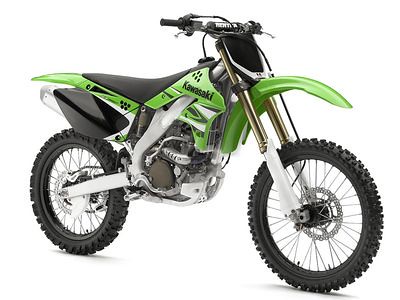Kawasaki’s 2010 Motorcyles
Posted on 6:07 AM by My_revival
Big Green has released the details of the 2010 model line today, and some of the changes are pretty nice. Some of them are simply…meh.
First up is the 2010 ZX-10R Ninja. This is one of the “Meh” entries in the lineup. Not much new to talk about here. They’ve modified the bodywork a little bit. They’ve changed the steering damper to a new–and presumably better–one. And they’ve painted the muffler black. Other than that, next year’s ZX-10R is pretty much status quo ante.
My best advice is to wait for a year if you want a big Ninja. Supposedly, Kawasaki is gonna put the bike through a complete redesign for the 2011 model year. Until then, the new Ninja is pretty much what the old Ninja was.
Another “meh” is the 2010 Versys. It has new headlights, that kind of have a BMW R1200R kind of feel. But it’s is, again, pretty much the same bike as this year’s.
I think we’re done with the “Meh” bikes in the line-up, though.
There are some nice changes to Kawasaki’s premier sports tourer. Not, unfortunately, some of the changes rumored earlier this year, like the night vision and HUD I wrote about a while ago. Instead, the Connie gets something called KTRC, Kawasaki’s first-ever traction control system. Also new is the the K-ACT II anti-lock braking system to control those panic stops, a larger windscreen to solve the complaints about the effectiveness of wind management, bodywork redesigned for better heat management, heated grips, upgraded suspension, and new Bridgestone tires.
Oh, and it’s blue. Blue is nice.
The Z1000 is the bike where major changes have occurred. The current incarnation of the Z1000 is OK…but just OK. Nice, but the power is kind of soft and squishy. The new Z1000 looks like a big step forward. It’s pretty much a completely new motorcycle, in fact.
First, the engine is completely new. It’s a 1043cc I-4 power plant adapted from the ZX10R, and it provides 136HP and 91lb-ft of torque. That’s a serious improvement over the current incarnation’s 953cc mill from the ZX-9. That means noticeably better acceleration, and improved top-end speed.
Next, the steel backbone frame is gone, replaced by an all-aluminum frame with a monocoque main spar. Fuel storage is now beneath the seat, so the narrower frame and changed fuel tank offers a narrower profile for better knee gripping. That’s helped by the narrow bottom and flared top of the…uh, whatever the thing on top now is, instead of a fuel tank.
There are lots of suspension changes, too, with the rear suspension being an all-new “horizontal” design, and more aggressive front-end geometry.
The styling has been updated, too, giving it a noticeable B-King vibe, but whether that’s a good thing or not is in the eye of the beholder.
Readmore














































